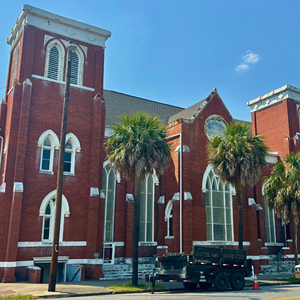Forbidden memories
[
{
"name": "Air - MedRect Combo - Inline Content 1",
"component": "14680855",
"insertPoint": "7",
"requiredCountToDisplay": "5",
"parentWrapperClass": "fdn-ads-inline-content-block"
},{
"name": "Air - MedRect Combo - Inline Content 2",
"component": "14680856",
"insertPoint": "15",
"requiredCountToDisplay": "9",
"parentWrapperClass": "fdn-ads-inline-content-block"
},{
"name": "Air - SVP - Leaderboard - Inline Content - 2",
"component": "16852291",
"insertPoint": "10",
"requiredCountToDisplay": "10",
"parentWrapperClass": "fdn-ads-inline-content-block"
},{
"name": "Air - SVP - Leaderboard - Inline Content - 3",
"component": "16852292",
"insertPoint": "20",
"requiredCountToDisplay": "18",
"parentWrapperClass": "fdn-ads-inline-content-block"
},{
"name": "Air - SVP - Leaderboard - Inline Content - 1",
"component": "16852290",
"insertPoint": "25",
"requiredCountToDisplay": "22",
"parentWrapperClass": "fdn-ads-inline-content-block"
}
]
When I first picked it up and glanced at the title, I thought to myself, Oh, great another Southern female writer glorifying her dysfunctional childhood.
I flipped to the middle of the book and read a bit, expecting to confirm my suspicions. Thirty-six hours and two boxes of tissue later I read the last lines, then sat there in a fog.
My husband looked at me and said, Are you okay? I nodded yes. And I was.
I had cried over the horrible things Sandy had been put through, at the terrifying things she had put herself through, and at her inability to love herself and find others to love her. But most of my tears were from the joy I felt when she finally started to feel better for good. Her story doesnt glorify anything.
Im a sensitive person and this book hit me at all my weak points. But it also got me asking questions about these weak points. My dad used to have me write out who, what, where, when, why, and how before I left the house. Sandys book has inspired me to ask the same of many things that make up my personality today. But thats another story....
Forbidden Memories is an account of an abusive childhood and the destructive adulthood that follows. Its about a psyche damaged beyond all available means of repair. Its about the complexity of human relationships and the innate need to feel and give love. It is frank, bold, and honesty is at its core.
I certainly dont have any skeletons left in my closet! Sandy laughs during our recent phone interview.
The former Savannahian now lives in Sautee, Ga., and is working on a second book, due out this year.
It didnt start out as a book, Sandy insists, explaining how Forbidden Memories began as a tool she used during her ongoing search to permanently heal her wounds from the past and live a stable and spiritually fruitful life as an adult. In short, her quest to be a happy person.
While in therapy I was not able to connect with my feelings as an abused child. Thats very common with abuse survivors, she says, explaining that, in what seems to be a subconscious act of self-preservation, those who have been abused form a seemingly unbreachable emotional detachment from the painful events of their past.
Getting in touch with those feelings is, according to Sandy, the cornerstone of healing.
I thought if I could express feelings about those events through writing, I could begin to get better, she says. I also thought that if I could share my story with other abuse survivors they may feel more comfortable talking about their own experiences. You know the old saying, Youre only as sick as your secrets.
If Sandy sounds astute for your average dysfunctional person, thats because shes a therapist herself. She actually graduated from what was then Armstrong State College with a degree in psychology in 1988.
Yes, she was a local girl for a time. Experiencing some of the good and a lot of the bad that Savannah of the 80s and 90s had to offer.
Through all her suffering and attempts to bury her not-too-distant past with drugs, alcohol and starvation, she managed to put herself through school, hold down demanding jobs -- at least for a while -- and get married to a kind and gentle man at least for a while.
Her achievements are a testimony to her refined ability to hide that the essence of her existence was anchored in shame and self hatred. The fact that she survived and continued to seek help is evidence that at the core of her being was a person not willing to give up the fight.
Sandy remembers first learning about physical violence from an unlikely source her grandmother! It is her grandmother who provides her with one of her earliest horrifying childhood memories.
Sandy is only a young child when she witnesses her pregnant mother getting beaten with a broom by her grandmother, who after beating her mother into a corner turns to Sandy and pushes her down a flight of steps.
Her father apparently is no better. He was a cop with a propensity to violence of which he is very proud. He is later fired from the police force for brutality. As his daughter discovers, his need to use physical force is not exclusive to his job.
Sandy, her mom and her two brothers are very often on the receiving end. Sandy learns early to tiptoe around her father and to be her mothers protector, a role she assumes for life.
Sandy loves her mother more than anyone, and says shes spent the better part of her life hoping that someday that love would be returned. While her mother is credited with getting her children away from their father while they were all still in one piece, she turns around and married Gene, a man who turns out to be equally abusive.
This time is different though, and more complicated. Now Sandys mom turns on her, and Sandys torment escalates to a vicious cycle of protecting her mother and brothers from Gene, protecting herself against her mother, fearing Genes next bedroom visit -- and having utterly no one to turn to.
But it is Sandys sense of loss of love from her mother that gives her the most devastating and lasting blow.
During these years Sandy forms the dehabilitating psychological problems of deep insecurity, loneliness, and self-hatred. It is during these years that her emotional development is arrested.
Her coping ability remains that of a victimized child. This makes her an easy target for sexual abuse outside the family.
In an effort to suppress her shame and dissolve her pain, Sandy discovers the anesthetizing effects of drugs and alcohol early in her teenage years.
But it takes a lot of drugs and alcohol to block out all the ugliness in Sandys life, and she becomes seriously addicted in short order.
She also finds another secret comfort, suicide. Its always an available alternative, and never far from the forefront of her thoughts.
She ends up in a drug rehab facility in Savannah after being arrested for possession of drugs. Here she quickly learns to work the system, making friends who work in the facility who can hook her up with practically any drug she wants.
She spends the next ten years in and out of hospitals, drug rehab facilities, in AA and NA programs, and with a variety of therapists, many of whom she becomes close friends with. Most of her therapists make some headway with helping, or at least stabilizing Sandy, but the recovery is always short-lived.
When Sandy makes a recovery from drug use she finds other methods of self destruction: She becomes anorexic, bulimic and an obsessive runner.
The core of Sandys dysfunction is so deeply buried that most therapists cant access it. Sandy learns to control it for a short time here and there, but it inevitably returns to take over.
Years of self-destruction culminate in what Sandy expects to be her final attempt at suicide. She ingests 180 muscle relaxers. She witnesses, for a few minutes, her body shutting down. To her horror she awakes from a coma five days later in a hospital. Miraculously she escapes death.
This is the point where the book takes the reader from a high-drama page-turner to Sandys step-by-step process of healing. This process takes her and her therapist, Dr. David Bailey, into unchartered territory that begins with cognitive therapy currently a popular method whereby essentially Sandy is given the tools to relearn how to think about the painful memories of the past and reassess how she chooses to feel about them.
Sandy dutifully follows Davids process and it helps her understand her pattern of dysfunction. But Sandys suicidal tendencies do not release their grip. Davids process only works at the surface.
He doesnt give up on Sandy. She convinces him to allow them to explore other methods that accessed her past.
Through exhaustive effort, coaching and infinite patience from David, Sandy learns to reach her deeper wounds and understand how to break the cycle of self hatred and destruction. Sandy learns how to act and react like an adult, not an adolescent victim.
Sandy is now working on a second book that will outline the counseling paradigm that she found was the key to her recovery.
Its a holistic approach. It looks at the big picture she explains. The concept of the inner child is the most important aspect of the healing process.
Riggin says the inner child approach is not utilized often because most therapy sessions are limited to five months because of insurance, and it takes about nine months to a year to access and heal your inner child. But when you factor in the fact that most all five month patients return to therapy at least once, taking the time to really heal the first time is not only great for the patient, its also more cost effective! she says.
Thankfully, most of us dont have stories of abuse and personal destruction that come close to Sandys. But everyone that reads her story will be enlightened in some way.
Maybe you will better understand a friend or loved ones addictions or self destructive cycle. Maybe youll understand that extreme dysfunction is not the stuff that Jerry Springer shows are made of.
Maybe youll pay closer attention to the clues of a person who is desperately crying for help.
Maybe you will find that that person is really you, and that those insecurities that hold you back over and over again are not personality flaws, but repairable damage done early in your life.
No, Sandy Riggins book does not glorify dysfunction. It simply tells the story of incredible human challenge and brings to light the simple power of a living a normal life. w
To order a copy of Forbidden Memories, go to www.sandyriggin.com/.
To comment in a letter to the editor, e-mail us at

























